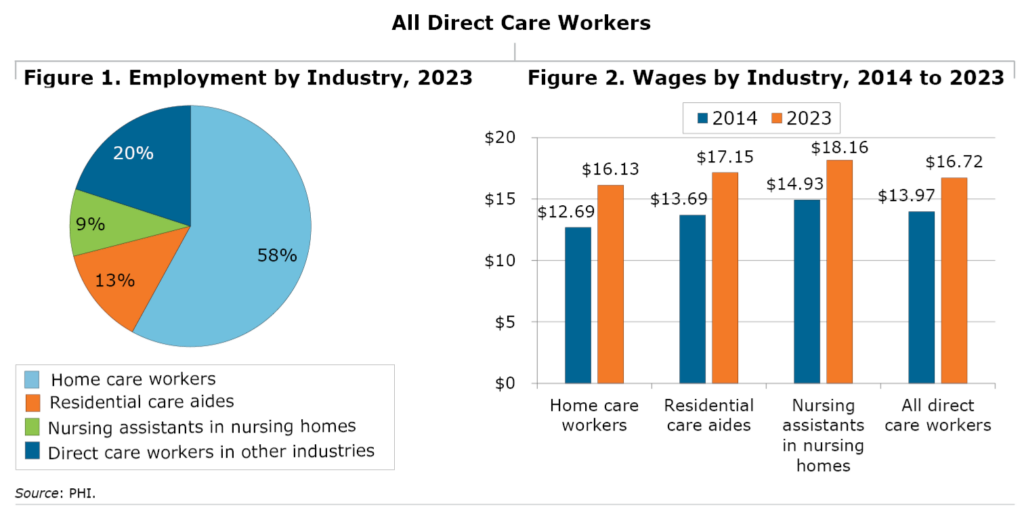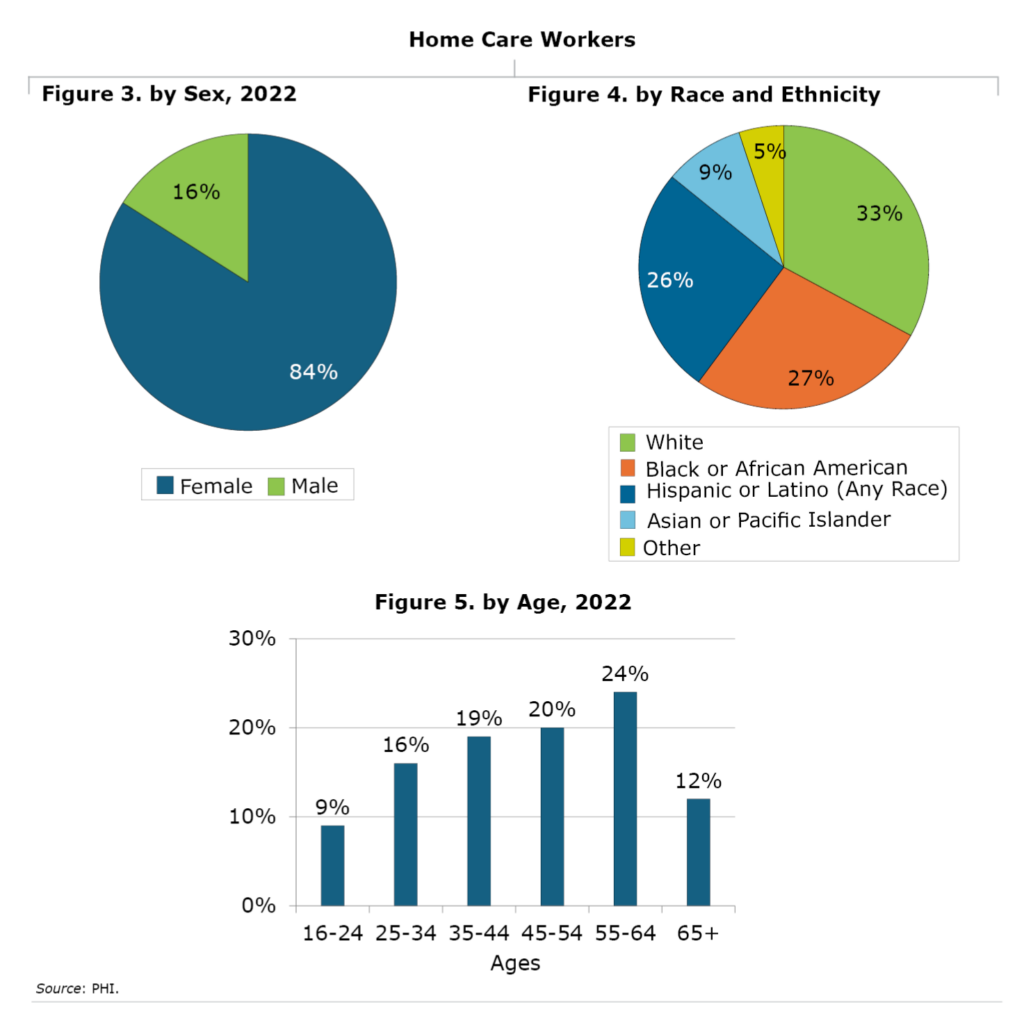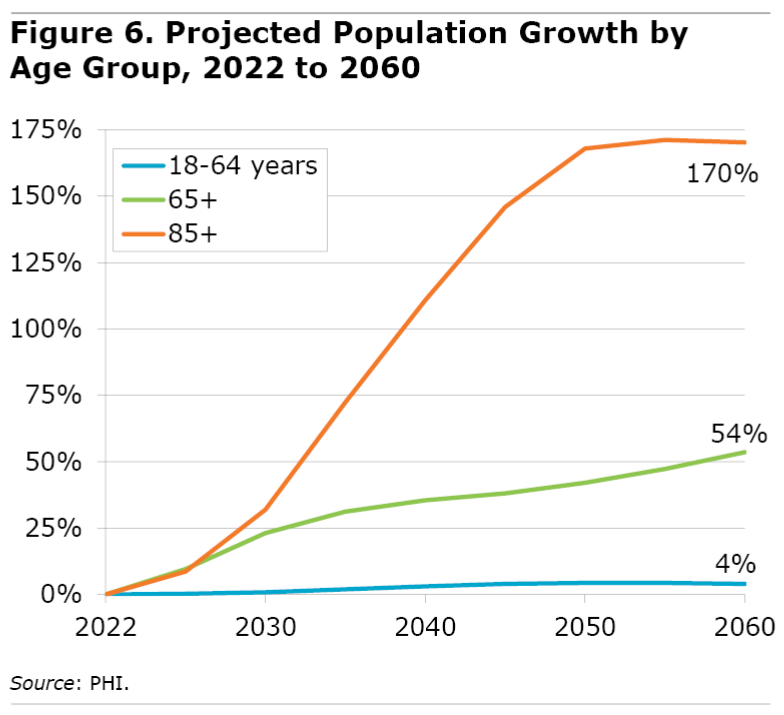
Report Paints Picture of Care Workers in the United States
This post was written by Harry Margolis, a new contributor to the Squared Away Blog.
I’ve been ringing the alarm about the coming elder care crisis beginning in about a decade when the oldest baby boomers start reaching their late 80s. One of the biggest challenges will be the shortage of direct care workers.
PHI, a nonprofit that supports care workers, recently issued a report: Direct Care Workers in the United States: Key Facts 2024. Here are some of its findings:
- There are 5 million direct care workers, including home care workers (2.9 million), residential care aides (655,950), and nursing assistants in nursing homes (458,590), which represent 80 percent of the total (see Figure 1).
- The number grew by almost 1.6 million over the last decade from 3.5 million in 2014.
- It is expected to grow another 860,000 by 2032.
- Home care workers currently assist more than 9.8 million older adults and people with disabilities living at home.
Low Pay
- Their median hourly wage was $16.72 in 2023 (see Figure 2).

- Due to the often part-time nature of direct care work, median annual income is $25,015.
- Practically half of direct care workers (49 percent) rely on public assistance such as Medicaid and SNAP benefits to make ends meet.
- Due to the low compensation and higher compensation for other entry-level jobs, there is significant turnover among direct care workers. As a result, the report projects that there will be 8.9 million direct care job openings between 2022 and 2032.
Female, Older, People of Color
- 84 percent of home care workers are women (see Figure 3).
- 67 percent are people of color, although they make up only 38 percent of the U.S. workforce (see Figure 4).
- Their median age is 47, and 36 percent are 55+ (see Figure 5).
- Immigrants make up 32 percent of the home care workforce even though they constitute just 17 percent of the U.S. labor force.

Overall, the report tells us that we rely on a low-income, female, largely minority and immigrant workforce to care for our elderly and disabled citizens. As the need for elder care grows, the competition with other entry level jobs such as fast food workers, cashiers, and stock and order fillers will continue to grow. Immigration policy will have a significant effect on the availability of direct care workers in the future.
Future Growth

I was happy to see that the report includes the projected growth of the 85+ population as compared to the 65+ and 18-64 age cohorts (see Figure 6).
The 85+ population, and thus the need for elder care, will almost double between now and 2060. Most of this growth will occur between 2030 when the oldest baby boomers will be 84 and 2050 when the youngest will reach age 86. Those two decades will be the crunch time for elder care for the United States, as well as for other countries around the world.
For more from Harry Margolis, check out his Risking Old Age in America blog and podcast. He also answers consumer estate planning questions at AskHarry.info. To stay current on the Squared Away blog, join our free email list.






